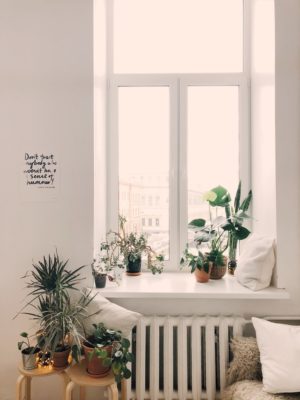You have no items in your cart. Want to get some nice things?
Go shopping
Source: Pexels
Whether you work from home or are a writer in your spare time, having the perfect space to work in is extremely important. Creating a place where your creativity can flow undisturbed and uninterrupted is key to staving off writer’s block and remaining productive.
How to achieve it? Which environment will enable you to flourish will depend a lot on your personal preferences but there are some universal tips that you can adapt to most preferences.
Location
Ideally, you would have a designated room in your house where you can work in peace. A spare room, a box room, a cubby hole under the stairs, or even a shed can offer much-needed peace and quiet. If this isn’t an option and you have limited space, you could consider converting the attic or basement, building a small extension, or creating a space in the garden, specifically for your work.
Alternatively, you could look to sell and purchase a home that provides a designated workspace for you. Of course, these suggestions all require additional capital but the more research you put in, the more reasonable you can make those costs. The internet plays host to all manner of resources in this area, allowing you to get free advice for your mortgage from Trussle, for example. The site says its average user saves as much as £344 a month with them. And in any case, remember that creating the perfect working space is an investment in your career and financial future, so it’s worth considering taking the leap now to reap the rewards later.
Ergonomics

Source: Pexels
Ergonomics is the way a workspace is arranged to fit and suit the person that is using them. Incorporating both psychological and physiological principles, desks, chairs, computer hardware, and other items can be engineered to offer optimum comfort to the user.
As well as facilitating a comfortable and enjoyable workspace, ergonomics also helps to prevent back problems, repetitive strain injury, headaches, squints, and tension in the shoulders. When designing the perfect workspace, be sure to incorporate ergonomic furniture and mouse pads and keyboards into your plan.
Lighting and sound
Lighting is very important when it comes to setting up the perfect space. Too dark and you can strain your eyes and get sleepy quickly, too bright and you could end up with a persistent headache. Ideally, you want a space with natural light during the day that can be enhanced with artificial light as the day goes on.
Lamps are a great way of providing subtle lighting, particularly if they have a dimmer switch. Opt for yellow-toned bulbs rather than white light to ensure the space remains peaceful and not too overwhelming.
Decor and design

Source: Pexels
What colour you decide to paint your space is rather subjective but it’s recommended to keep things neutral and soft. White, cream, light grey, magnolia, light blue, pastel yellow, and off white are all excellent choices. If you want something a bit more adventurous, however, you could consider teal, brown or purple. While they are more pigmented, they are also calming and relaxing.
You should also consider placing a number of house plants in the vicinity of your desk. Plants are proven to reduce stress, increase productivity, and clean the air around you.
Creating the perfect writing space is an incredibly personal process but hopefully, these ideas will give you some guidance into making the right choices for you.





